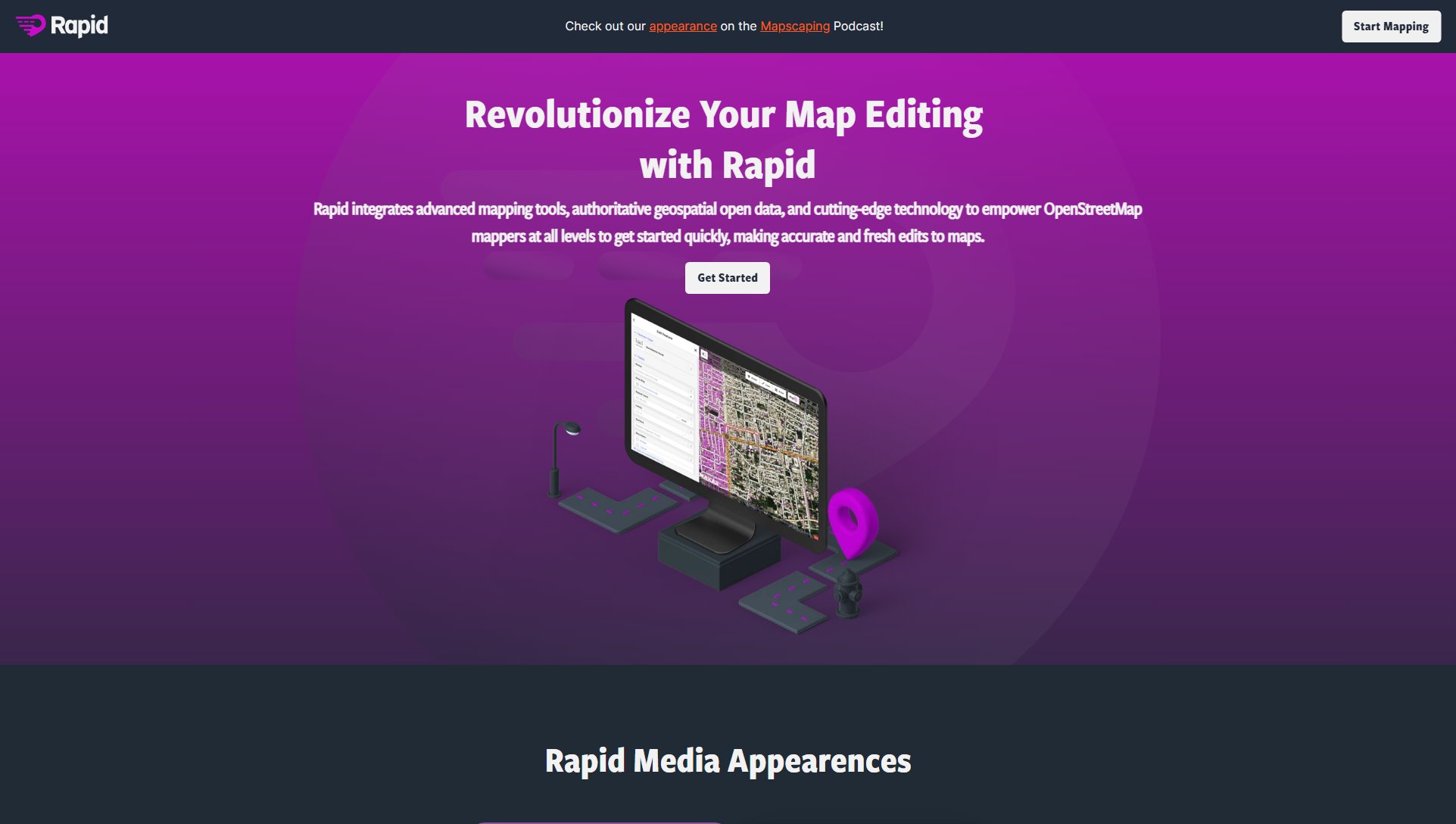Rapid Editor
Revolutionize map editing with AI-powered OpenStreetMap tools
What is Rapid Editor? Complete Overview
Rapid Editor is an advanced mapping tool that integrates geospatial open data and cutting-edge technology to empower OpenStreetMap contributors of all skill levels. The platform combines AI-analyzed satellite imagery with intuitive editing tools to make mapping faster and more accurate. Key benefits include automated geometry drawing using open data, AI-powered feature detection, and a user-friendly interface designed for both beginners and experienced mappers. Rapid Editor is particularly valuable for humanitarian organizations and community mapping projects that need to quickly update and improve map data. The tool is developed in collaboration with major mapping organizations and leverages the power of OpenStreetMap's open data ecosystem.
Rapid Editor Interface & Screenshots

Rapid Editor Official screenshot of the tool interface
What Can Rapid Editor Do? Key Features
AI-Powered Feature Detection
Rapid's machine learning algorithms analyze satellite imagery to identify and suggest potential map features like buildings, roads, and waterways. This reduces the manual work required for initial mapping and helps identify unmapped areas that need attention.
Open Data Integration
The editor seamlessly incorporates authoritative geospatial open data sources, allowing mappers to quickly access and verify existing map information without switching between multiple platforms.
Intuitive User Interface
Designed for both novice and expert mappers, Rapid's clean interface presents editing tools and data layers in a clear, accessible manner that simplifies the mapping process.
Community Mapping Support
Special features support organized mapping efforts by humanitarian groups and local communities, including project management tools and data validation workflows.
Rapid Editing Tools
The platform includes specialized tools that significantly speed up common editing tasks, reducing the time needed to make accurate map updates.
Best Rapid Editor Use Cases & Applications
Disaster Response Mapping
Humanitarian organizations use Rapid Editor to quickly update maps after natural disasters, identifying damaged infrastructure and accessible routes for emergency responders.
Community Mapping Initiatives
Local groups employ Rapid's tools to document their neighborhoods, adding businesses, footpaths, and community resources that aren't shown on commercial maps.
Urban Planning Support
City planners utilize Rapid's AI detection and open data integration to track urban development and infrastructure changes over time.
How to Use Rapid Editor: Step-by-Step Guide
Access the editor by visiting the Rapid Editor website and clicking 'Start Mapping' to begin a new session.
Use the location search or map navigation tools to find the area you want to edit or verify.
Review AI-generated feature suggestions and open data layers to identify potential map updates.
Use the intuitive editing tools to add, modify, or verify map features based on your local knowledge or reference imagery.
Save your edits to contribute them to the OpenStreetMap database, helping improve map data for everyone.
Rapid Editor Pros and Cons: Honest Review
Pros
Considerations
Is Rapid Editor Worth It? FAQ & Reviews
Yes, Rapid Editor is completely free as it's part of the OpenStreetMap ecosystem and supported by partner organizations.
Rapid is designed for both beginners and experienced mappers, with intuitive tools and guided workflows that make it easy to get started.
All edits contribute to OpenStreetMap's open data, which follows OSM's data guidelines. Rapid itself doesn't store user data beyond standard analytics.
Yes, as with all OpenStreetMap tools, you can use Rapid Editor for both personal and commercial projects following OSM's licensing terms.
Support is available through the OpenStreetMap community channels, GitHub issues for technical questions, and the Rapid documentation.